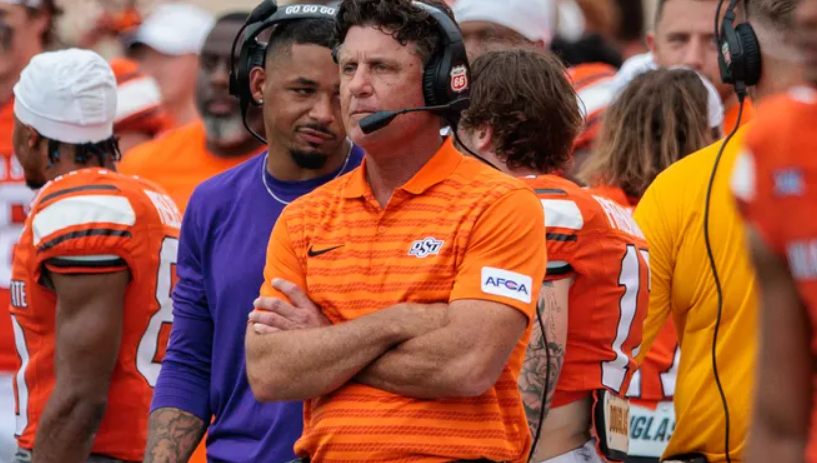
Mike Gundy’s strong job security—greater than that of most college football coaches—has occasionally led him into avoidable controversies. However, it also allows him to express himself more candidly than many of his peers.
So when Gundy asked the Oklahoma State media on Monday if they preferred the truth or typical coach-speak regarding the recruitment of linebacker Obi Ezeigbo from Division II Gannon University, the response was clear. With Gundy, his take on the situation is always engaging.
“He was very affordable,” Gundy said after Ezeigbo received the Big 12 newcomer of the week honor. “The players we usually pursue that are ready to compete at this level can be too costly for us. Ezeigbo was a great find—not just a quality young man with a successful background, but also one with physical traits we can develop. That’s why he ended up here; we identified potential in him that we could nurture, all at a price we could manage.”
In college football today, the shock factor has diminished, with instances like Baylor coaches donning “We Pay Players” t-shirts and Colorado quarterback Shedeur Sanders appearing on a Nike billboard in Times Square. While Mike Gundy’s remarks attracted attention for their candidness regarding recruiting and budget, reactions to his comments about Ezeigbo were mostly positive.
This reflects a significant development since the introduction of name, image, and likeness (NIL) rights three years ago.
After years of denying that unofficial payments influenced recruiting, college sports have moved into a more honest landscape where player acquisition is recognized as the commercial exchange it’s always been.
While it may lack romance, at least it’s genuine.
It would be beneficial for coaches, schools, players, and fans to take a lesson from Gundy and adopt a more transparent approach to these discussions.
Despite the new clarity around money’s influence in college sports, the details of how it operates in recruiting remain murky, even for those most involved.
Coaches and administrators are now tasked with assigning monetary values to players based on hearsay and speculation, trying to understand the current marketplace.
Athletes find themselves in a different situation, often turning to inexperienced agents charging high commissions to guide them on their options and expectations.
Meanwhile, fans rely on rumors and misinformation about an athlete’s value, while being asked to contribute substantial sums to NIL collectives to ensure a steady influx of talent.
This all leads to confusion: How much money do different programs have available? How is it distributed within teams? What do the competitive bidding processes for recruits actually involve?
With a seemingly offhand remark from Gundy, we start to understand the college sports economy better.
It’s clear that Oklahoma State isn’t positioned to be a major contender in the financial competition for top recruits or transfers. Gundy isn’t boasting about discovering talent that others overlooked.
The situation is straightforward: Gundy’s defense needed reinforcement, Ezeigbo was seeking an opportunity to play at a higher level, and since he was coming from a Division II program, there was no intense bidding war that would outprice a lower-budget school like Oklahoma State.
Why would anyone take offense to that? Instead of concocting a sentimental story about Ezeigbo’s affection for Stillwater, Gundy chose to present the reality, allowing fans to grasp how he and his staff navigate this complex environment.
While we can discuss the impact of salary caps in professional sports on product quality and athlete interests, one clear outcome is that they have educated fans about roster-building strategies and the tough decisions involved in player selection.
When a player signs a contract, fans can see the exact salary cap implications, the guaranteed years, and any conditions that could alter the terms. This transparency not only clarifies why a player might choose one option over another or why a team opts for a specific player, but it also helps fans understand how all the elements fit together, enabling better evaluations of coaching and management decisions.
In the long run, this should be an objective for college sports as well. Eventually, after navigating lawsuits, NCAA rule changes, and potential legislative solutions leading to a new pay-for-play model, schools will likely need to operate within some framework resembling a salary cap.
This would mean that some athletes will have higher financial values than others, impacting the schools they choose to play for. Gundy’s willingness to openly discuss this is a positive step forward. While it has always been somewhat true, it’s particularly relevant in today’s college sports landscape.
Three years into the NIL era, we’re ready to face the reality. Gundy deserves commendation for confidently introducing it into the conversation.

Leave a Reply